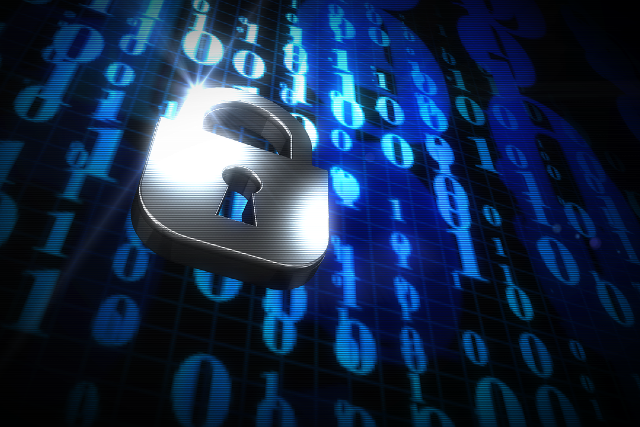Fortinet Acquires Next DLP Strengthens its Top-Tier Unified SASE Solution
Read the release
Insider threats, and the damage they can cause, are a major concern to businesses of all sizes. In fact, 34% of businesses experience some form of insider threat each year. Management, decision-makers, and cybersecurity teams shouldn’t focus solely on protecting their IT environments from threat actors outside the organization; defending business-critical systems and valuable data resources from the risks of insider threats must also be prioritized.
This guide will take an in-depth look at insider threats. We’ll discuss the types of insider threats, why they are dangerous to an organization, and how they can be detected and prevented.
Understanding the risks of insider threats is essential when developing cybersecurity plans and measures to protect your IT environment.
In this article:

|
The U.S. Cybersecurity & Infrastructure Security Agency (CISA) defines an insider threat as “the potential for an insider to use their authorized access or understanding of an organization to harm that organization.” The harm can be caused by unintentional or deliberate actions that affect the organization’s resources, personnel, facilities, information, equipment, networks, or systems.
With the average employee having access to 10.8 million files—20 million files for the average employee in a larger company—the potential damage is significant.
The specific behaviors that can result in damage from insider threats include:
The wide range of insider threats complicates the process of providing the necessary protection for a company’s infrastructure. This complexity, combined with the extensive damage that can be done by insider threats, makes it crucial that organizations take the necessary precautions and steps to detect and prevent them.
Most organizations have many individuals who require a certain level of authorization to perform their jobs and promote business objectives. The misuse of this authorization can result in serious risks and damage the business.

|
Three types of insider threats need to be addressed to protect an IT environment. While the underlying reasons for these threats are very different, they can all cause significant damage to an organization that, in extreme cases, can result in a business being forced to close.
Deliberate or malicious insider threats
Malicious insiders is the term used to describe individuals who deliberately engage in risky behavior that can result in damaging the IT environment and data resources. Malicious insiders may be current or former employees, business associates, or contractors. These individuals are currently or were previously authorized to access sensitive data and important systems.
Malicious insiders may take advantage of credentials that should have been eliminated when they left the company or when their position within the organization changed. They can then leverage these credentials and access valuable data or systems for destructive purposes.
Insiders may also be aware of security lapses they can use to conceal their activities, and may have purposely misconfigured security controls to further their malicious intentions.
The motivations driving the actions of malicious insiders are as diverse as the types of damage they can cause. Malicious insiders may be inspired to attack an organization for many reasons, including:
The range of activities perpetrated by malicious insiders can include:
It can be extremely difficult to detect malicious insiders until they conduct an attack or perform unauthorized activities. Employees who were previously trustworthy can become malicious insiders due to pressures outside of the workplace.
The following are some examples of specific risks associated with malicious insider threats.
Insider threats can also be caused as a result of accidental or careless behavior by employees or contractors. In these cases, the individual may be unaware that their actions threaten the organization.
They may also display negligence by taking unapproved shortcuts or disregarding security protocols. Negligent insiders account for 64% of insider threats, while 23% of insider threats are attributed to actual intent to cause harm.
Though this type of insider threat is not associated with malicious intentions, it can have the same negative effects on the IT environment and the company as a whole.
The following are some examples that illustrate the wide range of accidental or careless insider threats.
Accidental insider threats can occur at any time and are hard to address with non-technical solutions. Unfortunately, humans make mistakes that can inadvertently lead to a risk to the IT environment. As long as people are involved with maintaining the computing environment, companies need to focus on mitigating the effects of this kind of insider threat.
Compromised insiders are employees within an organization whose devices have fallen victim to malware infections, often through sophisticated phishing scams. Compromised insiders also include employees whose credentials have been stolen by external threat actors.
A compromised machine acts as a launching pad for various types of cyberattacks, enabling threat actors to gain unauthorized access to critical systems, exfiltrate data, or even disrupt organizational operations. By launching attacks from a compromised machine, threat actors can evade detection and escalate their privileges to gain access to more valuable assets.
Similarly, stolen credentials of employees open the door for cybercriminals to assume the identity of legitimate users within the organization's systems. With these stolen credentials, malicious actors can bypass security measures, access confidential data, or carry out fraudulent activities, all while appearing legitimate.
The following are some examples of compromised insider threats.

|
Insider threats pose as great a risk to an organization as those from external threat actors. The knowledge possessed by a malicious insider makes it easier for them to identify valuable resources that can be compromised without performing the reconnaissance required by an outsider.
This fact makes malicious insiders the most dangerous type of threat to an organization’s valuable resources. In addition, the costs are staggering: in 2022, the cost per incident grew more than one-third to $15.38 million.
Both malicious and accidental insider threats are very hard to guard against for the following reasons.
Insider threat indicators are anomalous or unexpected behavior engaged in by individuals when accessing the organization’s IT environment.
Sometimes these indicators are easy to discern by management, other employees, or the cybersecurity team. In other cases, malicious insiders may use subtle and sophisticated methods to disguise their intentions.
Awareness of insider threat indicators enables organizations to take measures to proactively address the risks and minimize the effects on the business. Identifying insider threat indicators can influence a company to improve its security and data handling policies.
The indicators can also point to distinct individuals who may be identified as malicious insiders or careless employees who require additional data handling and security training.
The following common insider threat indicators should be taken seriously by an organization intent on protecting itself from unnecessary risks. They are mostly focused on malicious insiders because there are often no indicators that an accidental threat exists.
Most users in an IT environment establish a pattern of login behavior that accesses the resources necessary to do their jobs. They usually log into the same systems every day and perform the same range of activities. A sudden change in this pattern may be an indicator of a malicious insider.
Individuals who make repeated unauthorized attempts to access resources they don’t need to perform their duties may be trying to compromise systems or data resources. Login attempts from alternate locations or at strange hours may also indicate a malicious insider who does not want to be seen trying to access restricted systems with compromised credentials.

|
Excessive download activity
Users who suddenly start downloading large volumes of data may pose an insider threat, as a malicious insider may be stealing sensitive files from the organization. Once again, this activity becomes more suspicious if it occurs after normal working hours or from an offsite location.
As such, the individual attempting these downloads should be investigated to determine if they pose a threat, or if there was a legitimate business reason for this abnormal behavior.
More than half of organizations (55%) consider privileged users their greatest insider threat risk. Requests for escalated privileges are often necessary for individuals to perform effectively in their roles within the organization. However, a malicious insider may make requests that have nothing to do with their jobs to gain access to systems or data they can compromise.
All privilege requests should be fully vetted by system administrators and security personnel to ensure access should be granted. Repeated requests for privileges by a specific individual should be taken seriously as an indicator of a potential malicious insider. The person may warrant additional monitoring to determine if they pose a risk.
Another indicator of a malicious insider is repeated unauthorized attempts to access restricted systems and data resources. A company should have a comprehensive identity and access management (IAM) program to ensure that access to sensitive resources is restricted to those individuals who require it for business reasons.
The high value of sensitive data resources makes them a prime target for malicious insiders. Repeated failed access attempts may be made by an insider who has partial credentials and is trying various passwords to get into the system.
This type of activity should raise red flags with the system administrators and security team and the responsible individual should be monitored closely.

|
Non-technical or personal indicators may indicate the presence of a potential malicious or unwitting insider. Individuals under financial pressure or facing burdensome family issues may be tempted to gain an advantage by misusing enterprise resources. These malicious insiders may be hard to detect until the IT environment is attacked.
Accidental insider threats can be the result of tired or overworked employees, as they may be trying their best to keep up with their workload by taking risky shortcuts. Supervisors should try to be aware of the outside pressures that impact their employees so they can mitigate this type of threat. In some cases, an employee’s responsibilities should be modified to address their issues.
Violations of an organization’s data handling policies can be an indicator of accidental or malicious insider threats. Alerts generated by automated monitoring or data loss prevention tools should be investigated to determine the reason for the violations.
Accidental insiders should be given additional awareness training regarding the policies, and if the attempts are found to be malicious, disciplinary action may be necessary.

|
Detecting insider threats requires an organization to employ a compressive approach that addresses the indicators discussed above. The variety of potential insider threats makes it impossible to identify them with a single process or technical solution.
The following components should be incorporated into a viable initiative to detect insider threats.
• Effective identity and access management procedures - Employees should only have the level of system privileges needed to perform their jobs. System administrators should verify that requests are legitimate before granting access to business-critical systems of sensitive resources. Requests that do not meet company guidelines should be denied, while repeated requests by an individual may indicate a malicious insider looking for greater access to the environment.
• Network monitoring - Network activity should be monitored and logged to assist in identifying insider threats. Suspicious activity such as excessive downloads, failed logins, and attempts to access restricted resources should be investigated by the security team. Monitoring needs to include internal networks as well as those exposed to external sources.
• Personal observation - Coworkers and management may be able to identify potential insider risks by changes in behavior or information an individual divulges voluntarily. Employees suddenly faced with financial pressures may be considering exploiting enterprise resources. Similarly, an overworked employee can be identified as a possible insider risk and have their responsibilities temporarily reduced.
• Data loss prevention software - Data loss prevention software can automatically enforce a company’s data handling policy and restrict assets from being misused deliberately or accidentally. A data loss prevention platform makes it impossible for any unauthorized individuals to access systems or data resources.
Organizations can take the following steps and best practices to minimize or prevent insider threats from affecting their businesses.
An organization has to know where it stores and processes valuable information so it can effectively protect it. This requires visibility into the environment and should include a complete inventory of data resources. Decision-makers can use this information to develop a strategy to protect them from insider threats.
Companies should develop a data handling policy that addresses the details of who can access sensitive resources, where they can be accessed, how they are used, and if they can be shared. The policy should be consulted when granting privileges to access systems and data in the environment.
All accounts of former employees and contractors should be disabled. If possible, they should be permanently removed from the environment to eliminate the chance that they will be reactivated and used for malicious purposes.
Multi-factor authentication (MFA) reduces the ability of a malicious insider to leverage compromised credentials. MFA eliminates the potential for sensitive resources to be accessed simply with a stolen ID and password.

|
Everyone in the organization should have system access based on the principle of least privilege. This ensures that an individual can only access the resources necessary to do their job. Implementing the principle of least privilege helps identify potential malicious insiders who may not be happy with their level of access.
User behavior and activity must be monitored to identify insider threat indicators. Activities such as failed login attempts to business-critical systems, large downloads of enterprise data resources, and logins at odd hours may indicate an insider threat. It needs to be determined if the threat is caused by carelessness or a malicious individual.
Insider threat risk assessments should be carried out periodically to guard against accidental and malicious threats. An assessment should comprise the following steps and include all aspects of the IT environment.
Building a positive security culture is crucial, and it starts and ends with trust. By cultivating trust, organizations can reduce the likelihood of employees taking actions that may compromise data security during their onboarding, departure, or transitions within the company.
Implementing the following best practices will help you build a positive security culture.
A data loss prevention solution automatically enforces a company’s data handling policies to protect its resources from accidental or malicious misuse. A comprehensive DLP platform performs activities like automatically encrypting sensitive information before transmitting it and restricting users from accessing unauthorized resources.
A DLP tool can also provide awareness training that helps reduce the prospects of accidental insider threats.
Check out the video below to learn more about data loss prevention best practices.
<iframe width="560" height="315" src="https://www.youtube.com/embed/-Jpec7tOQqM?si=IwsLH2xfs0skbq7F" title="YouTube video player" frameborder="0" allow="accelerometer; autoplay; clipboard-write; encrypted-media; gyroscope; picture-in-picture; web-share" allowfullscreen></iframe>
A DLP solution such as the Reveal platform by Next provides organizations with an effective tool in the quest to reduce insider threats. Using a DLP tool requires an organization to develop a data handling policy that identifies who can use data resources for legitimate purposes.
The DLP platform then automatically enforces the policy and ensures that data is only used by authorized individuals for business reasons.
Reveal is an advanced DLP solution that defends an IT environment from careless and malicious insiders. Next-gen endpoint agents use the power of machine learning to classify data as it is ingested into the infrastructure and at points of risk.
The platform uncovers anomalous and risky behavior that indicates an insider threat and restricts unauthorized users from accessing sensitive enterprise resources.
Reveal also provides essential user training to increase awareness regarding data handling policies and increase the workforce’s security IQ.
Contact the experts at Next to schedule a demo and see how implementing this advanced yet easy to use DLP solution can protect your organization from all types of insider threats.
A malicious insider poses a greater threat to a business than a careless or accidental insider. While any type of insider can be responsible for a damaging data breach that exposes sensitive information, a malicious insider may be motivated by financial gain to engage in espionage, sabotage, or the theft of valuable resources.
A data handling policy is essential for understanding how enterprise information can be used throughout the organization. The policy is also a critical component of a security strategy that includes a data loss prevention platform. The automated enforcement of the policy by a DLP tool protects against accidental and malicious insider threats.
It is impossible to completely eliminate the risks of insider threats, as managing an IT environment requires that certain individuals have access to sensitive information that can be misused in a variety of ways. However, by implementing a DLP tool, companies can take steps to minimize the risks to their business.

Blog

Blog

Blog

Blog

Resources

Resources

Resources

Resources

